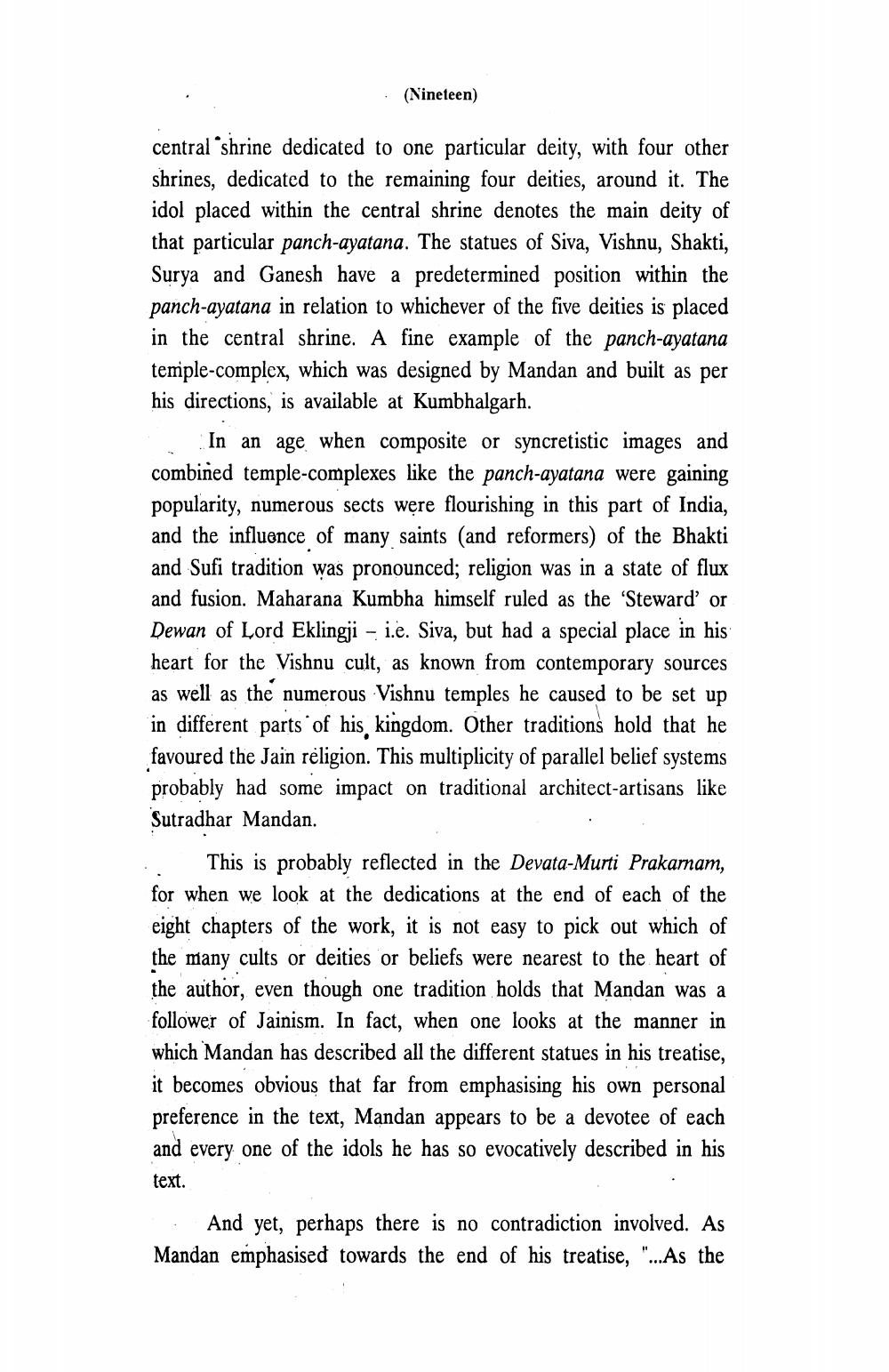________________
· (Nineteen)
central shrine dedicated to one particular deity, with four other shrines, dedicated to the remaining four deities, around it. The idol placed within the central shrine denotes the main deity of that particular panch-ayatana. The statues of Siva, Vishnu, Shakti, Surya and Ganesh have a predetermined position within the panch-ayatana in relation to whichever of the five deities is placed in the central shrine. A fine example of the panch-ayatana temple-complex, which was designed by Mandan and built as per his directions, is available at Kumbhalgarh.
In an age when composite or syncretistic images and combined temple-complexes like the panch-ayatana were gaining popularity, numerous sects were flourishing in this part of India, and the influence of many saints (and reformers) of the Bhakti and Sufi tradition was pronounced; religion was in a state of flux and fusion. Maharana Kumbha himself ruled as the 'Steward' or Dewan of Lord Eklingji - i.e. Siva, but had a special place in his heart for the Vishnu cult, as known from contemporary sources as well as the numerous Vishnu temples he caused to be set up in different parts of his kingdom. Other traditions hold that he favoured the Jain religion. This multiplicity of parallel belief systems probably had some impact on traditional architect-artisans like Sutradhar Mandan. ... This is probably reflected in the Devata-Murti Prakarnam, for when we look at the dedications at the end of each of the eight chapters of the work, it is not easy to pick out which of the many cults or deities or beliefs were nearest to the heart of the author, even though one tradition holds that Mandan was a follower of Jainism. In fact, when one looks at the manner in which Mandan has described all the different statues in his treatise, it becomes obvious that far from emphasising his own personal preference in the text, Mandan appears to be a devotee of each and every one of the idols he has so evocatively described in his text.
And yet, perhaps there is no contradiction involved. As Mandan emphasised towards the end of his treatise, "...As the




